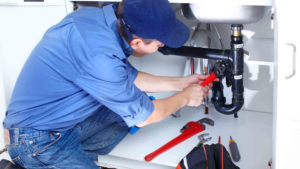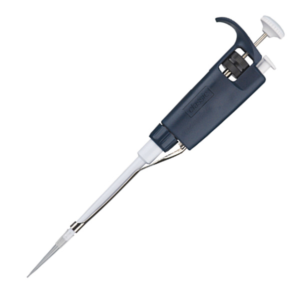Emergency Plumbing Aurora CO happens when a problem is severe enough to threaten your home or business. These problems often occur without warning and must be addressed immediately.
Leaking pipes, floods, and other problems can lead to expensive repair bills. They can also damage furniture, cause floor stains, and encourage mold growth.

The pipes that carry water throughout your home can clog for various reasons. From food scraps and grease to hair, soap scum, and toilet paper, the things we put down our drains can add up over time and cause blockages. These obstructions aren’t just an inconvenience. They can also lead to flooding, burst pipes, and expensive repairs. If you have a clogged drain, it’s best to call an emergency plumber immediately.
A clogged drain should be considered an emergency because it prevents you from using your toilets and other fixtures. It can also cause wastewater to back up into your home, which is a health and safety hazard. A sewer backup can also release airborne contaminants that are difficult to get rid of.
You may be tempted to try to clear a clogged pipe yourself with a snake or drain plunger, but this can lead to more serious problems. It’s important to find a reputable plumbing company with experienced and licensed plumbers who can fix the problem correctly and quickly.
Some plumbing issues are more urgent than others, and it’s important to know the difference between the two so you can determine when to call a plumber. Emergency plumbing services are available 24/7, and they can be called whenever you encounter a problem that poses a threat to your home or health.
Water leaks are one of the most common plumbing emergencies and can be dangerous to your family’s health and property. They often occur under sinks or behind walls, and they can cause significant damage if left untreated. It’s important to understand how to identify a water leak and how to shut off your home’s main water supply in case of an emergency.
There are many reasons to consider a leaking pipe an emergency, including the fact that it can damage your home’s structure and cause mold and mildew. It’s also not safe for your family to use the affected area until it’s repaired. You can avoid this problem by knowing how to spot a water leak, understanding how to turn off your home’s main water supply, and calling a plumber right away.
Burst Pipes
When pipes burst, water damage can threaten your home and belongings. In addition to causing costly property damage, pipe bursts can also lead to mold growth and cause electrical short circuits. It’s important to know the signs of a pipe burst so you can respond quickly and call an emergency plumber for help.
Dripping sounds and water stains are common indicators of a burst pipe. If you notice these warning signs, turn off the water supply to prevent further damage until a plumber arrives to address the problem. In addition, if the burst pipe is located near electrical wiring or appliances, you should switch off the power to that area to prevent electrocution and fire.
Another clear sign of a burst pipe is large puddles that appear in multiple areas of your home. This water can ruin carpets, furniture, electronics, and heirlooms. It’s essential to keep your valuables away from these puddles until a professional arrives.
Lastly, if your drywall becomes damp or warped, it’s likely due to a burst pipe. When a pipe bursts, it creates friction between the drywall and wood framing. Over time, this can cause the drywall to break down. It’s essential to call a plumber immediately if you notice this issue so they can repair the damage and prevent mold growth.
There are several causes of burst pipes, including natural disasters, earthquakes, construction work, and poor maintenance. These events can shift the ground, putting stress on buried pipes that can eventually lead to a rupture. Pipes can also be damaged by heavy objects that fall on them or improper installation.
To reduce the risk of burst pipes, have your plumbing system inspected and maintained by a professional regularly. This service can identify small issues before they become major problems and save you a lot of money in repairs. It can also help prevent clogs, water leaks, and other problems that can lead to expensive damages. By following these tips, you can minimize the impact of a burst pipe and ensure that your home remains safe and dry.
Water Leaks
Even if they seem minor, water leaks can quickly turn into emergencies if left unchecked. Whether caused by damaged pipes or simply ageing fixtures and fittings, leaking taps, showerheads, and toilets can lead to significant water damage in a short space of time, driving up your water bill, increasing humidity, and creating an ideal environment for the growth of mould. In extreme cases, unchecked leaks can also cause structural damage to your home and potentially expose you and your family to health risks.
A leaking pipe may not seem like a plumbing emergency at first glance, especially if it’s behind walls or under floors where you can’t see it. However, it can still cause significant damage in a short space of time and drastically affect your property value. Emergency plumbers can use a range of techniques to stop leaking pipes, including the application of a water hammer arrester.
Other signs of a leaking pipe include wet spots on walls or floors, unexplained increases in your water bill, and the sound of running water when all the taps are turned off. A leaking pipe can also pose a safety risk for your family, as it could allow contaminated water to reach electrical components in the home, leading to a potential fire hazard.
The first step in addressing a leaking pipe is to switch off your water supply. This can be done by turning off the main water valve in your home, or by locating the isolation valve for the affected fixture and turning it clockwise. It’s also a good idea to turn off any electricity or gas supplies to the affected area, as this can help minimise damage and prevent further leaks.
Once your water supply has been turned off, you should try to contain the problem as much as possible by using buckets or towels to soak up excess water. You should also move any furniture or belongings that are at risk of getting wet to higher ground and take steps to protect them from any further water damage. Once the floodwaters have receded, you can contact your emergency plumber to assess the damage and implement any necessary repairs.
Flooding
Plumbing disasters often occur when we least expect them. Some of them, like a burst pipe or flooding caused by a clogged toilet, are serious enough to require emergency services. The key is knowing when a problem qualifies as an emergency so you can call the right plumber at the right time.
Lack of Water
One of the most obvious signs of a plumbing emergency is when you don’t have any running water at all. This could be due to a clogged faucet or even a broken water heater. Regardless of the cause, it’s important to contact a plumber immediately because without water you can’t shower, wash dishes, clean your clothes, or do anything else that requires running water.
Water Leaks
Any type of water leak should be considered a plumbing emergency because it can lead to expensive damage in a short amount of time. In addition to causing structural damage, water leaks can also result in higher than usual water bills. To avoid a costly disaster, make sure to check your pipes regularly for leaks and have any issues fixed as soon as possible.
Sewage Backups
While not as serious as a clogged drain or flood, sewage backups should always be treated as a plumbing emergency. This is because sewage contains harmful bacteria, viruses, and parasites that can contaminate your home and create health hazards for you and your family. Emergency plumbers have the tools and training necessary to safely clean up and repair sewage backups.
While many problems can wait for a regular plumber to come out, some simply cannot. By understanding what types of plumbing issues are truly emergencies, you can save yourself the stress of wondering whether your issue is worthy of a midnight call to a 24/7 emergency plumber. By following the tips in this guide, you can rest assured that any problem you encounter will be dealt with promptly and professionally. Good luck!




